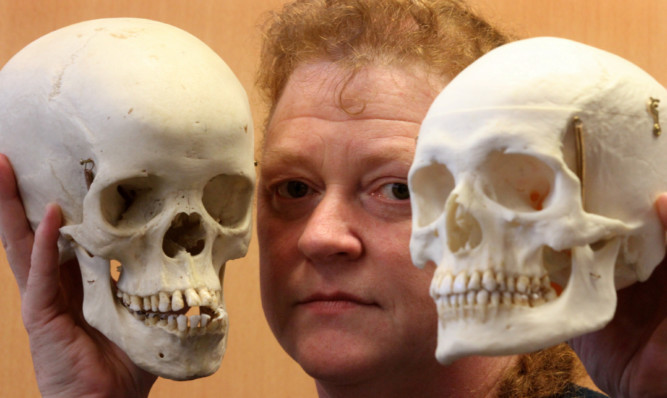As terrorists, militants, warlords and dictators become increasingly powerful and sophisticated, the world is increasingly turning to experts such as Dundee professor Sue Black.
Her ground-breaking forensic work has been praised by the International Criminal Court (ICC) in The Hague.
In 2004, Professor Black was one of the scientists sent to Kosovo to study the bodies found in villages and mass graves to find out what had happened.
Her assistance was vital to establish whether forensic evidence from the war crime scenes corroborated witness statements about the massacre of Kosovan Albanians by Serb forces.
Speaking to The Courier during a visit to speak at Dundee University, the ICC’s chief prosecutor, Fatou Bensouda, said the use of forensic scientific evidence was having an increasing impact upon cases of national and international significance.
She said: “Forensic science plays an increasingly critical role in putting evidence together.
“It is for this reason that I want to pay homage to Professor Black for the work that she has done in Rwanda and also in Kosovo.
“I think it has helped a lot to put the best evidence forward before the International Criminal Court.
“Evidence such as this is critical in each and every case.”
The challenges posed by the work undertaken by the ICC have seen Mrs Bensouda and her team seeking an increasing number of alternative ways of securing and presenting evidence.
“We have been looking at alternative forms of evidence, such as forensics, and the team that I have put together are now playing an increasingly important role in the ICC’s investigations.
“We now have expertise in forensics, cyber evidence and in imagery, which enables us to present judges with 3D images of the crime scenes.
“In some cases we have been able to use this 3D technology to show judges where the perpetrators live, where they planned and how they attacked.
“It has become critically important that we look in this direction.
“We are constantly developing the tools we use and we are also getting involved in investigations at an increasingly early stage, including carrying out exhumations and autopsies.”
In addition, the ICC looks at video footage and internet sources such as YouTube vital when terrorist groups increasingly make use of such resources to spread terror and propaganda and when they announce and take ownership of their crimes.
Mrs Bensouda added: “Using other forms of evidence is particularly vital in some cases as in our investigations in Kenya where witness interference is rife.
“We have lost critical witnesses and have been forced to drop a number of charges.
“Had there been alternative sources of information perhaps this would have helped.”
Mrs Bensouda leads the Office of the Prosecution at the International Criminal Court in The Hague which investigates and prosecutes cases of genocide, crimes against humanity and war crimes.
